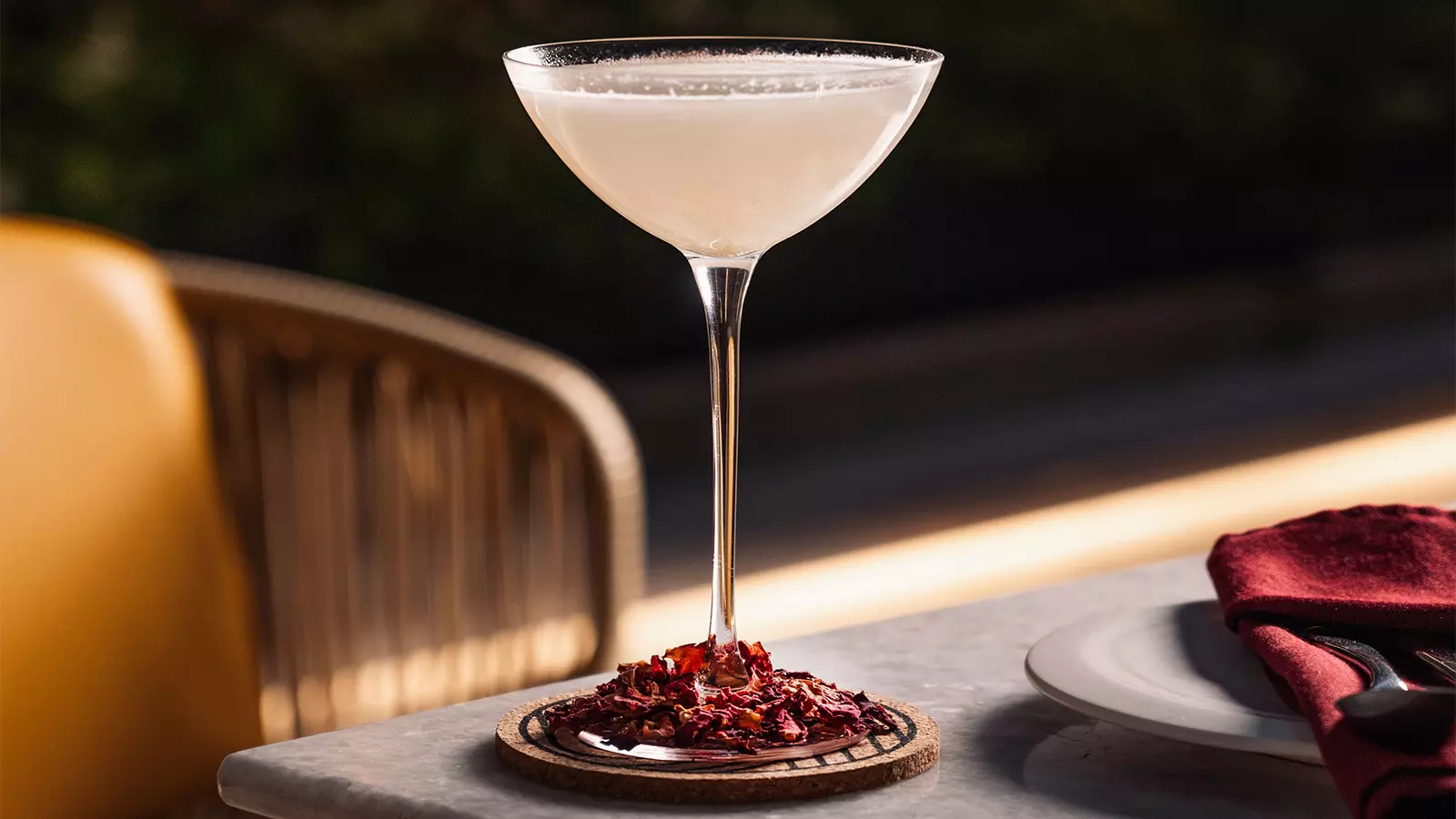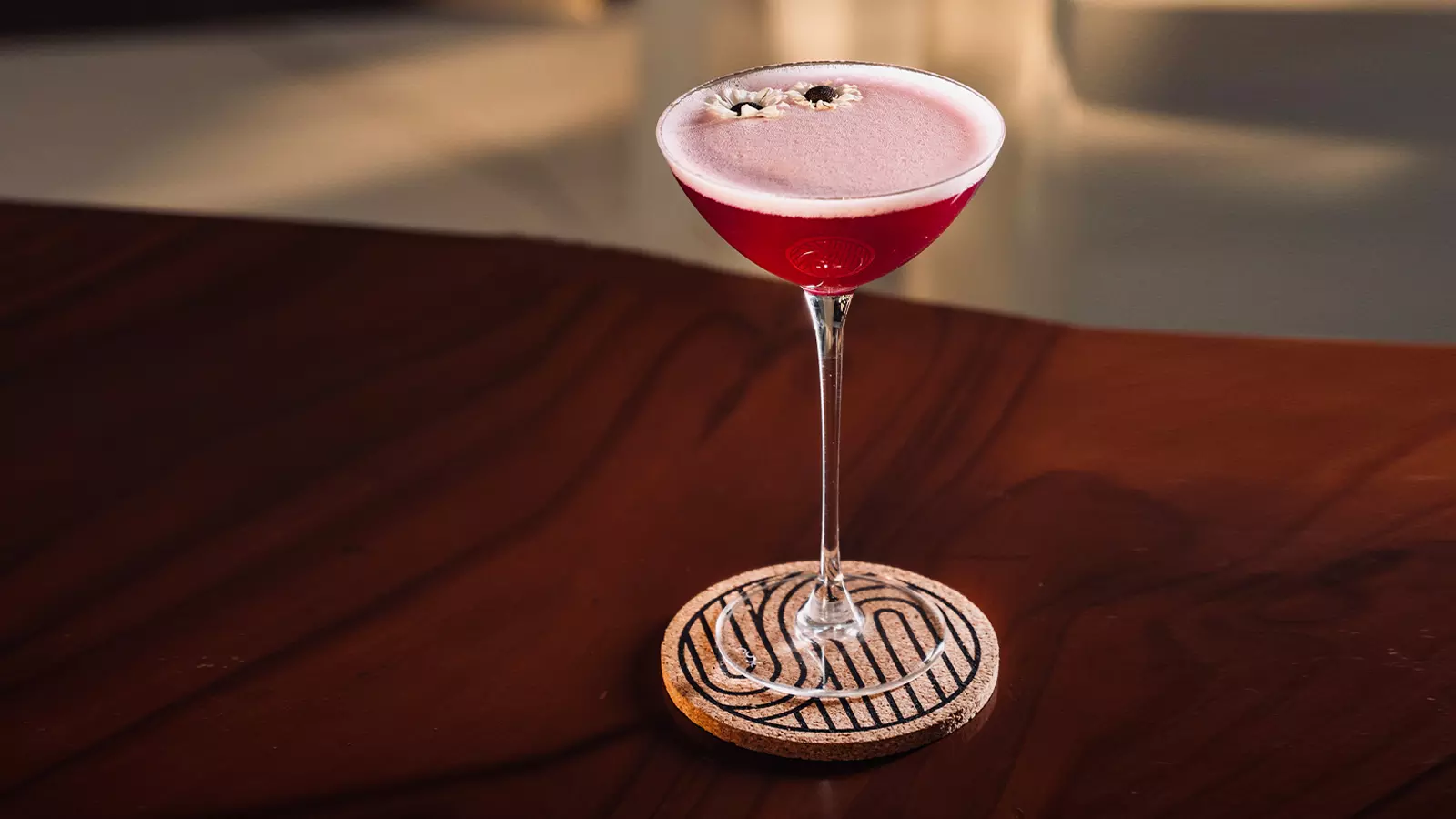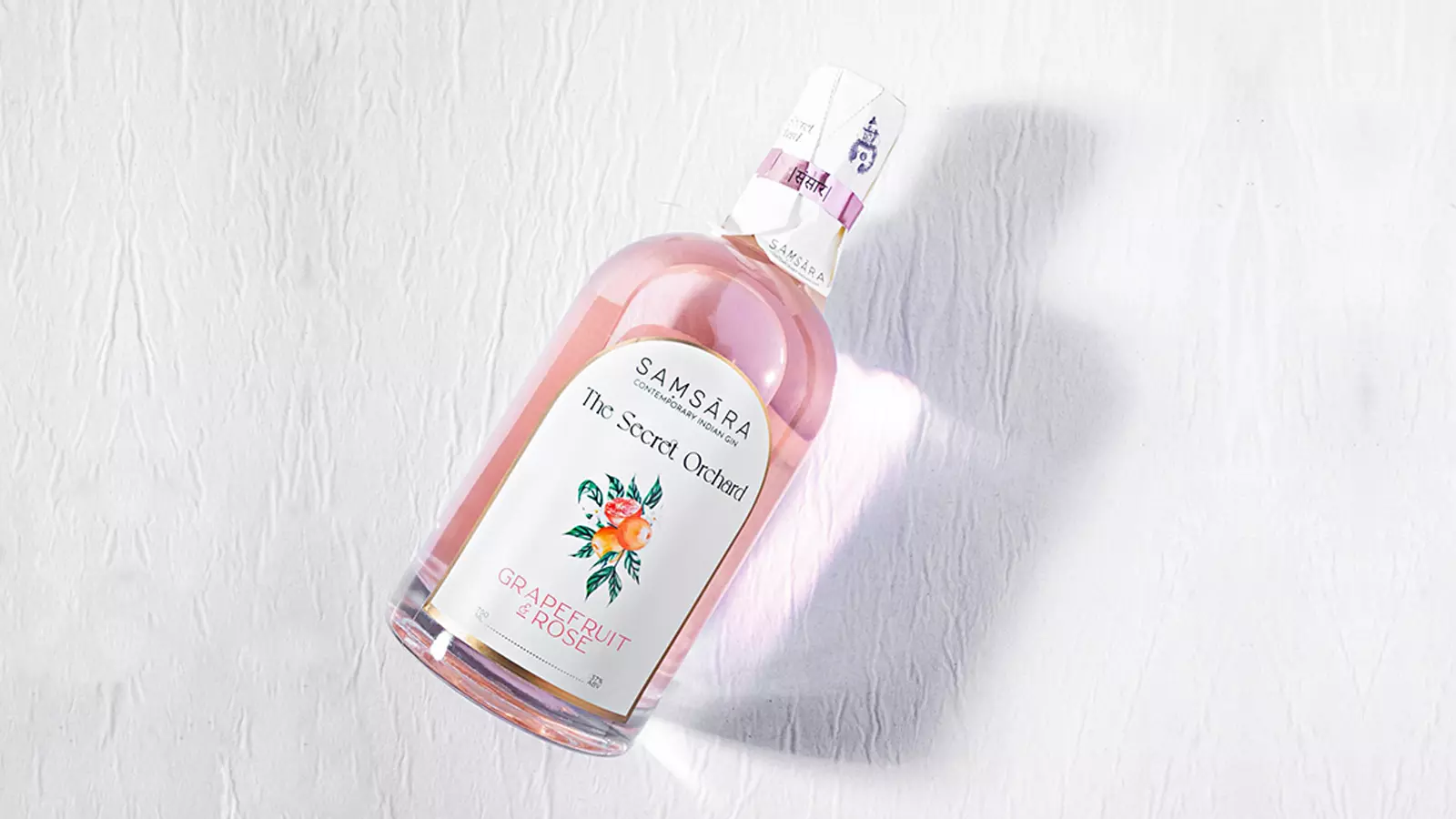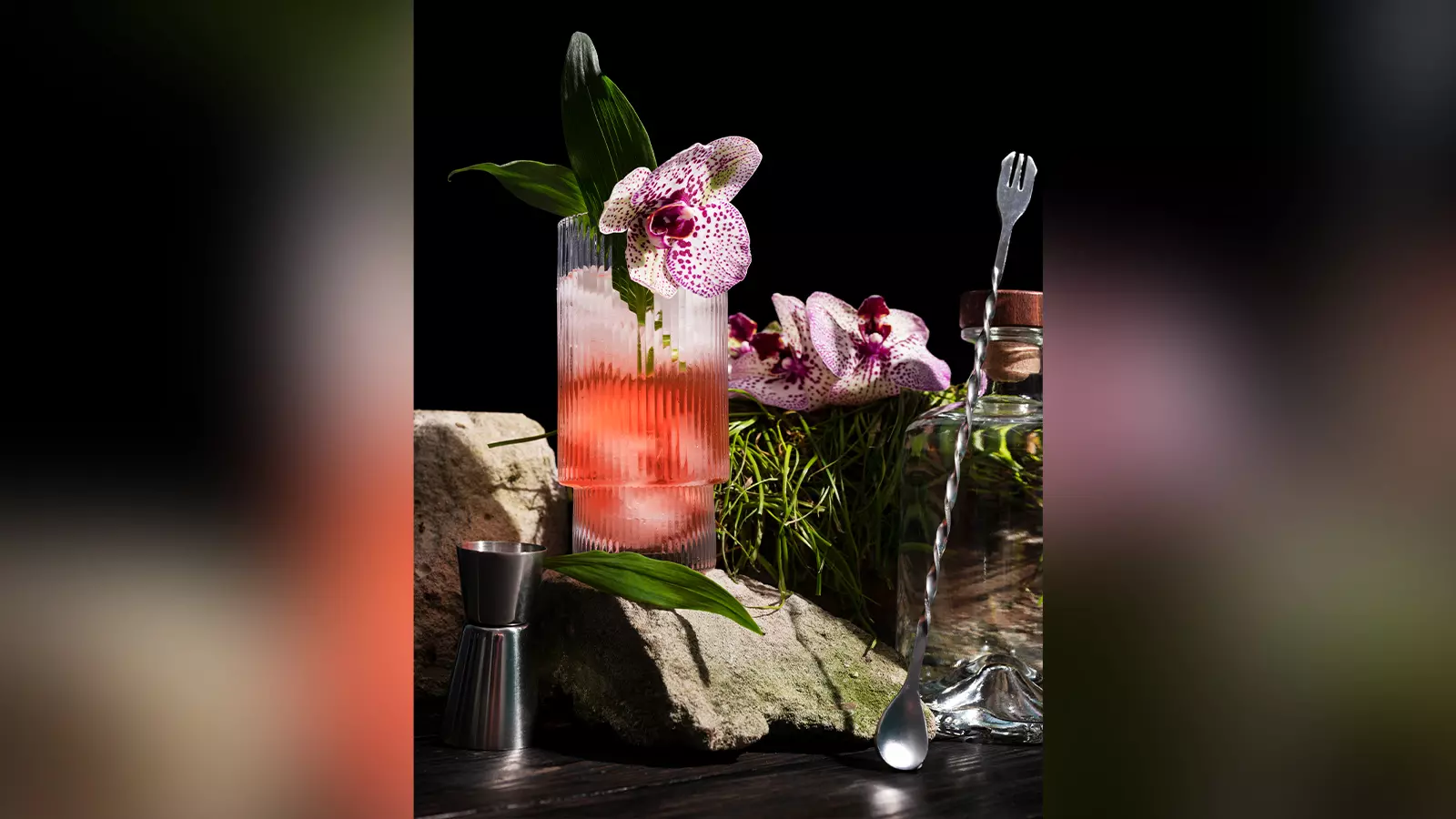
- Home
- India
- World
- Premium
- THE FEDERAL SPECIAL
- Analysis
- States
- Perspective
- Videos
- Sports
- Education
- Entertainment
- Elections
- Features
- Health
- Business
- Series
- In memoriam: Sheikh Mujibur Rahman
- Bishnoi's Men
- NEET TANGLE
- Economy Series
- Earth Day
- Kashmir’s Frozen Turbulence
- India@75
- The legend of Ramjanmabhoomi
- Liberalisation@30
- How to tame a dragon
- Celebrating biodiversity
- Farm Matters
- 50 days of solitude
- Bringing Migrants Home
- Budget 2020
- Jharkhand Votes
- The Federal Investigates
- The Federal Impact
- Vanishing Sand
- Gandhi @ 150
- Andhra Today
- Field report
- Operation Gulmarg
- Pandemic @1 Mn in India
- The Federal Year-End
- The Zero Year
- Science
- Brand studio
- Newsletter
- Elections 2024
- Events
Gin-spired innovation: A passing trend or lasting spirit?

Ouro, a fresh addition to Bengaluru’s dining scene, is making waves with its innovative gin-based cocktails paired perfectly with desserts. Patrons are raving about the delightful fusion of flavours, marking a refreshing departure from the norm. From its historical roots as a medicinal remedy for malaria during the British colonial era to the diverse array of homegrown gin brands...
Ouro, a fresh addition to Bengaluru’s dining scene, is making waves with its innovative gin-based cocktails paired perfectly with desserts. Patrons are raving about the delightful fusion of flavours, marking a refreshing departure from the norm. From its historical roots as a medicinal remedy for malaria during the British colonial era to the diverse array of homegrown gin brands boasting unique flavours, India's gin culture has evolved significantly. With a growing demand driving production, the journey of gin in India continues to captivate.
In recent years, especially post the Covid pandemic, India has witnessed a surge in the popularity of gin, a spirit traditionally associated with Western cultures. This new-found appreciation for gin has not only led to an increase in consumption and production but has also sparked a wave of innovation among Indian mixologists. With a rich assortment of botanicals (herbs) and flavours at their disposal, Indian bartenders and manufacturers are redefining the gin experience, pushing boundaries, and captivating palates with their creative concoctions.
Growth of Gin in India
India, renowned for its dynamic and diverse culinary scene, has enthusiastically embraced the emergence of gin. Despite rum and whisky dominating 97 per cent of the market, the Indian gin sector has witnessed remarkable growth, projected to reach a valuation of US$1.7 billion by 2024. This surge can be attributed to shifting consumer preferences, evolving drinking habits, and the burgeoning cocktail culture across the country.

India has witnessed a surge in the popularity of gin, a spirit traditionally associated with Western cultures. Photos: On arrangement
The genesis of the Indian gin revolution can be traced back to Anand Virmani, a former member of the Hendricks marketing team. Virmani's entrepreneurial journey began when he opened a bar in Delhi and recognised the pivotal role of locally produced gin in the Indian market. Initially skeptical about the potential for gin in India, Virmani's perspective underwent a transformative shift as he observed a growing demand for gin among his discerning clientele. Despite the popularity of international gin brands, there was a glaring absence of a national gin label in the market.
In response to this gap, Virmani took the bold step of launching the indigenous gin brand "Greater Than" in January 2018 through Nao Spirits. Leveraging intensive marketing efforts and tapping into the market's demand for a homegrown gin, Greater Than swiftly gained traction, catalyzing a positive momentum within the industry. The affordability of Greater Than compared to its international counterparts made it an attractive choice for bartenders, leading to increased incorporation of gin in cocktails and subsequent surge in sales.
Building upon the success of Greater Than, the Indian gin landscape witnessed the emergence of another homegrown brand, Stranger and Sons, within a remarkably short span of six months. This rapid proliferation of indigenous gin labels underscores the dynamic nature of the Indian spirits market and the receptiveness of consumers towards innovative and locally crafted offerings.
The rise of Craft Gins
The emergence of craft distilleries in India has further fueled the gin renaissance. Craft gin producers are harnessing indigenous herbs and artisanal techniques to craft high-quality, small-batch gins that capture the essence of India. These locally-made gins offer a diverse range of flavor profiles, from earthy and spicy to floral and citrusy, catering to the discerning palates of gin enthusiasts.

Building upon the success of Greater Than, the Indian gin landscape witnessed the emergence of another homegrown brand, Stranger and Sons, within a remarkably short span of six months.
Homegrown gin brands in India are harnessing the rich herb diversity of the country to craft distinctive spirits that showcase the essence of Indian terroir. Ingredients such as Holy basil, Himalayan Juniper, Gondraj limes, Lavender, Hemp, Cucumber, Hibiscus, Peach, Coffee, Hazelnut, Elderflower, Grapefruit, Rose, and Goan nutmeg are at the forefront, infusing each gin with unique flavours and aromas.
“We actively explore India’s rich botanical heritage. We pride ourselves on integrating quintessentially Indian ingredients into our gin-making process. The distinctive flavour characteristics of Indian-made gins, rooted in traditional ingredients, set us apart. Leveraging local botanicals like Hemp Seeds, we embrace India’s diverse flavours. Beyond Hemp Seeds, we use Rose Petals and Cardamom which are integral parts of Indian celebrations and cuisine. These additions not only contribute to the unique taste of our gin but also evoke a sense of familiarity and nostalgia. It's about offering a sensorial journey that resonates with the cultural roots and celebrations of India,” said Riddhi Agarwal, co-founder, Samsara Gin.
The need of the hour
An increasing number of drinkers are expanding their taste palates and seeking out premium gin cocktails that offer a sophisticated drinking experience. With the growing availability of artisanal gins and a burgeoning cocktail culture, consumers are becoming more adventurous in their choices, eager to explore a diverse range of flavours and combinations. From classic gin and tonics to innovative gin-based cocktails crafted with unique botanical infusions and garnishes, enthusiasts are indulging in a variety of libations that tantalise their senses and elevate their drinking experiences. This shift towards premium cocktails underscores a broader trend towards quality and sophistication in the Indian drinking scene, reflecting a desire for refined beverages that offer both flavor and flair.

There is also an attempt in some quarters to tailor gin cocktails to cultural requirements.
“There is a certain segment who are committed gin drinkers and given that there is such a wide variety of locally produced gin brands now and these brands are produced with botanicals that suit Indian palates. Understanding the preferences and interests of your customers gives you insights on how to market and promote to effectively reach and engage those most likely to be interested in gin cocktails with Indian influences, which is why we created a dedicated G&T section which has different flavour profiles,” says Anirudh Kheny, managing partner, Daysie – All Day Casual Bar.
“The trend aligns with the growing popularity and increasing interest in craft gin-based cocktails. Indian-inspired ingredients such as turmeric, cardamom, saffron, mango, and other spices add complexity and depth to gin cocktails, enticing consumers looking for innovative and exotic options,” added Anirudh.
Innovation in mixology
Indian mixologists are renowned for their ingenuity and creativity, and they have been quick to infuse local flavours and ingredients into gin-based cocktails. From classic gin and tonic variations to innovative gin fusions, these bartenders are pushing the boundaries of traditional mixology. Ingredients such as spices, herbs, seasonal fruits, and botanicals commonly found in Indian cuisine are being incorporated to create unique and flavour-packed cocktails.
“The infusion of Indian flavours and ingredients is like sending gin on a spicy, aromatic journey through a Bollywood blockbuster. Picture this: cardamom, curry leaves, and saffron doing a tango with juniper berries. It's a masala party in your mouth. Indian mixology is the superhero cape that gin never knew it needed. As a mixologist, I see the future of gin cocktails where gone are the days of a simple G&T where every ingredient has a backstory more dramatic than a Bollywood plot twist. Cheers to the future – it's bold, it's Indian, and it's shaking up the global mixology scene like never before,” said Avinash Kapoli, leading mixologist and co-founder, CocktailKompany.
“We have a dedicated bar team who experiments with different combinations to create unique gin cocktails that showcase various elements. Since gin has become such an increasingly popular spirit in recent years, it is imperative that we have a range of options to cater to each individual and their unique preferences. We also use aesthetic garnishes, unique glassware, and serving techniques that enhance the visual appeal and overall experience for your customers,” said Anirudh.
“In India, mixologists are not just crafting cocktails; they are curating experiences. The vibrant tapestry of Indian culture is finding expression in the hands of these mixologists. Their innovative use of local ingredients is not only transforming the perception of gin within the country but is also putting Indian cocktails on the global stage. The global cocktail scene is recognising and embracing the unique and diverse flavours that Indian mixologists are introducing, giving them a competitive edge and bringing a piece of India to the international palate,” Riddhi.
There is also an attempt in some quarters to tailor gin cocktails to cultural requirements.
“We work hard to make sure our gin cocktails are stylish and meaningful to different cultures. Our team looks at what’s popular in cocktails worldwide and what flavours people like. We also team up with experts who study cocktails and different cultures. And together, we curate offerings that fit our customers’ evolving tastes while staying true to our restaurant’s ethos. We use various ingredients, chemistry and trusted methods from different cultures to make our cocktails interesting, and exciting for our guests to relish,” Kaushik Patra, Cluster Beverage Manager at Smoke House Deli, told The Federal.
“As a former whisky drinker, my transition to gin stemmed from the rich variety of flavours and cocktails that gin offers, these days. While vodka has its own appeal, I found gin to be more versatile and intriguing due to the wide array of botanicals used in its production. Previously, my options were limited to expensive international brands, but with the emergence of numerous Indian gin brands offering high quality at affordable prices, I found myself exploring this spirit more. Additionally, the creativity of mixologists in restaurants and bars has played a significant role in my shift to gin. They skillfully craft cocktails using fresh seasonal fruits, aromatic herbs, spicy elements, and sweet notes, creating a myriad of flavors, dimensions, and textures that tantalize the palate,” says Neil Nunez, who is a client support officer and biker.
Gin pairing menus
Upscale bars and restaurants are offering curated gin pairing menus, showcasing the versatility of gin and its ability to complement a wide range of cuisines.
“Gin has become my ultimate go-to, with gin and tonic being my trusted companion for years. However, my enjoyment of gin has reached new heights thanks to the innovative pairings offered by restaurants and bars. Now, I no longer have to agonise over the perfect dish to complement my drink. Instead, I can indulge in the seamless harmony of expertly crafted cocktails and carefully curated food selections, elevating my dining experience to a whole new level of pleasure and satisfaction,” said Harshitha Sathyaprakash, content editor at a private firm.
For a wholesome experience, bars and restaurants don’t just have to focus on the gin but also the food that goes with it.
“We have noticed that people who order our flavoured G&T’s tend to order dishes on the spicier side such as a ghee roast or sambal calamari as the cocktails equalize the spice and complement each other's flavour profile. Hence, our G&T’s have elements like lavender, kiwi, homemade pear syrup, and blue pea tea which are extremely refreshing and go well with spicy and flavourful dishes,” added Anirudh.
“Making our gin cocktails stand out among other bars takes a lot of innovation and consistent creativity. We make sure to offer special and rare gins from all over the world to make our guests get an exclusive and premium experience. Our menu is carefully put together to highlight the skill and craft that goes into each cocktail. We even have cocktails that are exclusive to our restaurant. To make things even more special for our guests, we offer personalised consultations with our expert mixologists who can curate flavours just the way you like them, making our guests’ every visit unique and memorable,” said Kaushik.
Eco-friendly practices
With sustainability becoming a key focus in the beverage industry, Indian mixologists are embracing eco-friendly practices by sourcing local, organic ingredients and reducing waste in cocktail preparation.
Just a fad
In India, while the gin market has seen significant growth and innovation in recent years, there are factors that suggest the trend may not sustain its current momentum. Despite the emergence of several homegrown gin brands and a surge in cocktail culture, the market remains relatively niche compared to other spirits like whisky and rum. Additionally, the traditional preference for spirits like whiskey and rum, deeply ingrained in Indian drinking culture, may pose a challenge to gin's long-term success. Moreover, the high taxation and regulatory barriers in the Indian alcohol industry could hinder the growth of gin brands, making it difficult for them to compete with established players. While gin has certainly made its mark in India's beverage landscape, its future as a mainstream spirit remains uncertain.

With a rich assortment of botanicals (herbs) and flavours at their disposal, Indian bartenders and manufacturers are redefining the gin experience, pushing boundaries, and captivating palates with their creative concoctions.
“As a sommelier, I understand the cyclical nature of trends in the beverage industry. While the popularity of homegrown gin and the cocktail trend has been remarkable, it's important to recognize that trends evolve over time. We're likely to see consolidation in the market as competition intensifies and consumer preferences shift. Additionally, the dynamic nature of urban centers like Delhi and Bombay often leads to rapid shifts in drinking habits, with tequila emerging as a new favorite in some circles. However, it's worth noting that established brands like Bombay Sapphire and Hendrick's will likely maintain their stronghold in the market, alongside a select few homegrown brands that offer unique propositions. While the fervor for gin may simmer down in certain circles, it will continue to have a dedicated following among enthusiasts and connoisseurs,” said Magandeep Singh, beverage sommelier.
In conclusion, as the gin scene continues to evolve in India at least for now, the role of mixologists and manufacturers in shaping the landscape cannot be overstated. Their passion for experimentation, coupled with a deep understanding of flavour profiles, has resulted in an exciting array of gin-based creations that delight and inspire. With a nod to tradition and an eye towards innovation, Indian mixologists are poised to leave an indelible mark on the global cocktail scene, one gin-spired creation at a time.
